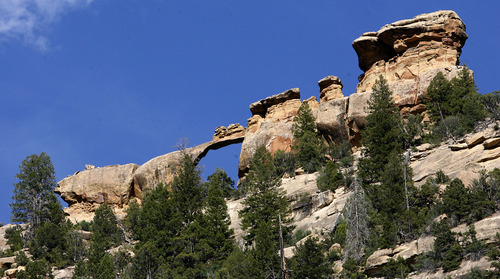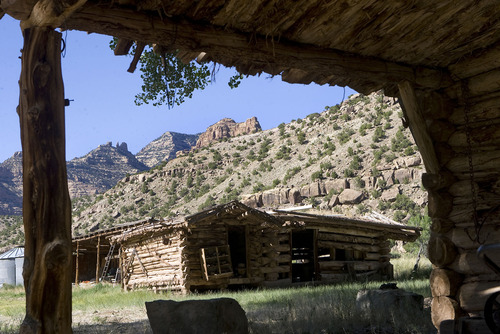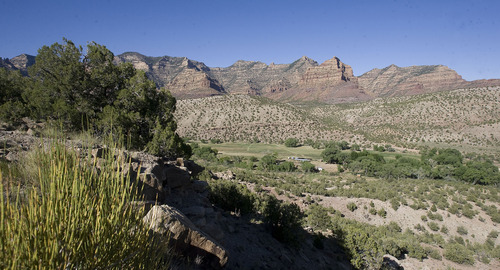This is an archived article that was published on sltrib.com in 2013, and information in the article may be outdated. It is provided only for personal research purposes and may not be reprinted.
Faced with the persistent threat of wildfire in remote Range Creek Canyon, the University of Utah proposes bringing cattle back to the archaeological research area in the hopes of knocking back invasive cheatgrass.
Conditions were so hazardous last summer that rockfall triggered a fire that burned 900 acres up canyon from the field station. The Lighthouse Fire was the fourth since the canyon southeast of Price came into public ownership a decade ago, according to Duncan Metcalfe, the U. anthropology professor who oversees excavations there.
Through a program of "prescriptive" grazing, Metcalfe hopes a couple hundred cows can devour much of the cheatgrass that carpets the canyon floor every spring. This two-foot-high annual dries out early and can easily ignite by the time fire season hits.
But cheatgrass, though nutritious, is palatable for only a brief window in the spring, perhaps a week or two, before its seed heads cure into prickly pods.
Jim Catlin, a conservation ecologist with the Wild Utah Project, wonders whether intensive short-term grazing would do more harm than good, especially near the creek.
"If this is such a good idea, why has it not worked anywhere else?" he asked. "It leads to compaction and loss of native plant species. Cattle always hit riparian areas first. It's the Chuck-A-Rama of forage. It has both water and grass. You can't tell a cow to eat just one thing."
The canyon had been grazed for more than a century while the Wilcox family owned the bottom lands in the lower canyon and controlled the surrounding public lands. A decade ago they transferred 1,513 acres to the state, which has entrusted the U.'s Natural History Museum of Utah with managing the undisturbed archaeological resources along with two adjacent 640-acre sections of state land.
Grazing is allowed under the conservation easement attached to the former Wilcox land, which is to be managed primarily for research and the preservation of its ancient Fremont Indian sites.
The Bureau of Land Management administers the slopes towering above the canyon floor. No cattle have been here since the transfer except for some limited grazing in 2006-07.
Dozens of students live and work in the canyon at the height of fire season. Their safety concerns Metcalfe most. A fire in the narrow canyon could trap researchers and destroy the historic ranch buildings that now house the U.'s Range Creek Archaeological Field School.
Flammable cheatgrass is a noxious import from Eurasia that has proliferated across the West, displacing native plant communities, particularly in disturbed areas.
Reducing it would address the fire threat arising from the high levels of woody vegetation that have built up, according to Roger Banner, a retired Utah State University professor of wildland resources who helped design the plan.
"You would have some control of the trigger fuels. If you have a high stock density they can reduce seed production considerably," Banner said.
"We are moving through so quickly we don't expect them to eat much else than cheat," Metcalfe said. "We'll never eliminate it. That stuff is a cancer. We can knock it down and we'll have to gauge the effects, see if benefits outweigh the costs. We'll revise the grazing plan every year. It's an experiment."
The U. proposal would not resurrect the canyon's old grazing allotments, officials stressed. The BLM is now conducting an environmental review.









